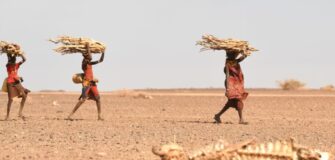Deadly Flooding in West and Central Africa Leaves Devastation
Share
Deadly Flooding in West and Central Africa Leaves Devastation: Crocodiles and Snakes Found Among Human Corpses
Severe flooding in West and Central Africa has claimed hundreds of lives, while leaving behind a scene of unimaginable horror. In the aftermath of the torrential rains, human bodies have been found floating alongside the corpses of crocodiles and snakes, a grim reflection of the widespread devastation that has impacted millions across the region.
The Scale of the Disaster
The deadly floods have affected numerous countries, including Nigeria, Chad, Niger, and parts of Cameroon, displacing entire communities and destroying vital infrastructure. Local authorities and humanitarian organizations are struggling to manage the crisis, as rivers have burst their banks, inundating villages, farms, and cities. The floods, which are among the worst seen in decades, have left homes and farmlands submerged, worsening food insecurity in the region.
Health and Safety Concerns
In addition to the loss of life, health and safety concerns are mounting. The rising waters have forced dangerous wildlife—such as crocodiles and snakes—into populated areas. Emergency services have reported multiple instances of these animals being found among floodwaters, posing an additional threat to those trying to survive the catastrophe.
Contaminated water sources, lack of sanitation, and the spread of waterborne diseases like cholera are also increasing the urgency for humanitarian aid. Health officials warn that the combination of displaced populations and hazardous conditions could lead to a public health crisis.
Climate Change and Regional Vulnerability
Experts attribute the scale of the disaster to a combination of climate change and poor infrastructure in the affected regions. Rising global temperatures and erratic weather patterns have made extreme weather events more frequent and intense. For many African countries, the lack of adequate flood prevention measures has made them especially vulnerable to these types of disasters.
Call for Aid
Governments in West and Central Africa are appealing for international assistance to manage the aftermath of the flooding. Humanitarian organizations have launched emergency relief efforts to provide food, clean water, and shelter to those affected. However, the sheer scale of the disaster makes recovery a daunting task.
As communities across West and Central Africa grapple with the long-term effects of the flooding, the incident serves as a stark reminder of the urgent need for sustainable solutions to climate-related disasters.


